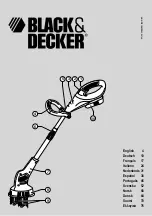
4
LAWNAIRE ZTS
SAFETY
OPERATING SAFELY
IN GENERAL
–
Use extra care when loading or unloading the
machine onto a trailer or truck. Do not use split
ramps. Use full width ramps to load or unload
unit.
– Watch out for traffic when near or crossing
roadways.
–
Do not run the engine in an enclosed area where
dangerous carbon monoxide fumes can collect.
–
Do not place your foot on the ground while
operating the machine with the platform down.
–
Do not pull any loads or equipment.
–
Never leave a machine unattended. Always set
parking brake, stop engine and remove keys
before dismounting.
MACHINE PREPARATION
–
Check operator present interlock system and
brake operation. Adjust or repair any problems
before using.
–
Do not tamper with or defeat safety devices.
Keep guards, shields and interlock safety devices
in place and in proper working condition. They
are for your protection.
–
Keep all fasteners such as nuts, bolts and pins
well secured.
–
Visually inspect tines, tine bolts and the aerating
assembly for wear or damage. Replace worn or
damaged tines and bolts.
–
Verify that machine and attachments, if any, are
in good operating condition.
–
Do not lower tines until ready to aerate.
STARTING
–
Start only according to instructions in this manual
or on the machine.
–
Before attempting to start the engine, make sure:
- the parking brake is on;
- the traction drive is in NEUTRAL.
–
When starting the engine, make sure hands and
feet are clear of the tines.
–
Do not change engine governor settings or
overspeed the engine. Operating the engine
at excessive speed can increase the hazard of
personal injury.
MANEUVERING SAFELY
IN GENERAL
–
Slow down before turning.
–
Do not aerate in reverse unless absolutely
necessary. Always look behind and down
for small children and pets before and during
backing.
–
Be aware when approaching blind corners,
shrubs, trees, tall grass or other objects that may
obscure vision.
WALK-BEHIND USE
–
The aerator may be operated as a walk behind
unit by raising the footplate and latching it in the
stowed position. Walk behind mode is useful
when terrain or circumstances make operation as
a ride-on uncomfortable or even dangerous. For
example operation near a bank, above a drop-off
or retaining wall would be places where walk-
behind mode should be used. When operating
as a walk-behind, operate across slopes, not up
and down.







































